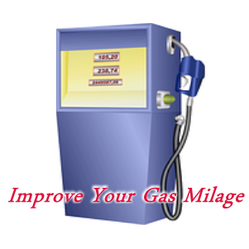Driving is the ultimate form of freedom, allowing you to travel wherever and whenever you choose. However, it can also be dangerous if certain safety precautions are not taken. According to the Association for Safe International Road Travel (ASIRT), more than 3,200 people die each day from car accidents. So, follow these tips to stay safe when driving.

15 Safety Driving Tips for 2018
by RobertKeith
Driving is the ultimate form of freedom, allowing you to travel wherever and whenever you choose.
#1) Stay Off Your Phone
Statistics show that one-quarter of all U.S. car accidents are attributed to texting and driving. No call or text message is worth your life or the lives of others, so stay off your phone when behind the wheel.
#2) Inspect Tires for Tread Wear
Try to get into the habit of inspecting your tires for tread wear at least once a week. As your tires lose their tread, they'll create less traction with the road and become susceptible to blowouts. If your tires have little or no tread left, replace them.
#3) Maintain 2- or 4-Second Stopping Time
A common mistake new drivers make is failing to create enough space between their car and the car in front of them. When driving behind someone, you need enough space so that you can stop if they suddenly brake. A good rule of thumb is to give yourself two seconds of stopping time in good weather or four seconds in bad weather.
#4) Check Lights Before Driving at Night
Prior to driving at night, check your car's headlights, brake lights and turning lights to ensure they all work. If other drivers can't see you, they may veer into your lane or otherwise come into path.
#5) Wear a Seat Belt
Whether you're driving to the local convenience store or going across state lines, always wear your seat belt. According to Moving Insider, nearly half of vehicle-related deaths and injuries can be avoided by wearing a seat belt.
#6) Be Conscious of Drivers' Blind Spots
All cars have blind spots, and it's important that you avoid driving in them to reduce the risk of an accident. A blind spot is essentially any area of the road that the driver cannot see through his or her front window or mirrors.
#7) Check Fluid Levels
Check your car's oil, coolant and transmission fluid levels on a regular basis. Under normal conditions, your car shouldn't leak or lose any of these fluids. An internal problem, however, may cause fluids to leak while increasing the risk of your engine seizing while driving.
#8) Drive Defensively
The goal of driving isn't to reach your destination in the shortest time possible; it's to reach your destination safely and without incident. Rather than driving aggressively, drive defensively to reduce your risk of an accident.
#9) Prepare an Emergency Kit
Even if you never use it, you should create an emergency kit for your car. You can include items like bandages, antibiotic ointment, hydrogen peroxide, gauze, rubbing alcohol, a flashlight, batteries and road flares.
#10) Don't Drive When Tired or Fatigued
If you feel tired or fatigued, refrain from getting behind the wheel. A study conducted by AAA found that 21 percent of all motor vehicle fatalities are attributed to drowsy driving.
#11) Plan Your Route
Driving an unfamiliar route increases the risk of an accident. If you aren't unfamiliar with the area, you may struggle to find the right roads. So, plan your routes in advance to protect against accidents.
#12) Come to a Complete Stop at Stop Signs
When you approach a stop sign, come to a complete stop. Not only is it illegal to drive through them, but you risk a side impact collision from another vehicle.
#13) Use Left Lane for Passing
On highways and other multi-lane roads, stay in the right lane unless you are passing another vehicle.
#14) Don't Drive on Icy Roads
Rain can make roads slippery and more dangerous for driving, but the presence of ice is an even bigger concern. If the roads are iced over, stay off them.
#15) Use Turn Signals
Finally, use your car's turn signals when making turns or changing lanes. Failure to do so could result in another vehicle rear-ending you.
Following these tips will reduce your risk of an accident when driving. But if you happen to get into an accident, contact the auto body repair professionals at Brisbane Panel & Paint for a fast and friendly quote on repairs.
You might also like
Flying Cars for Personal Transportation: George Yan and the EH...The April 2016 issue of Popular Mechanics covers the EHang 184 as personal tr...
Improve Your Gas MileageNew Gauges to improve gas mileage and some other tips, Learn ways to save money.



 10 Things You Need To Have Clean and Spotless Clotheson 10/28/2021
10 Things You Need To Have Clean and Spotless Clotheson 10/28/2021
 10 Business Ideas For Newbies That Will Thriveon 10/27/2021
10 Business Ideas For Newbies That Will Thriveon 10/27/2021


Comments
RobertKeith, Thank you for the practical guidelines and the links to additional information. How much of a car length distance ahead and behind should one maintain regarding cars, motorcycles and trucks?